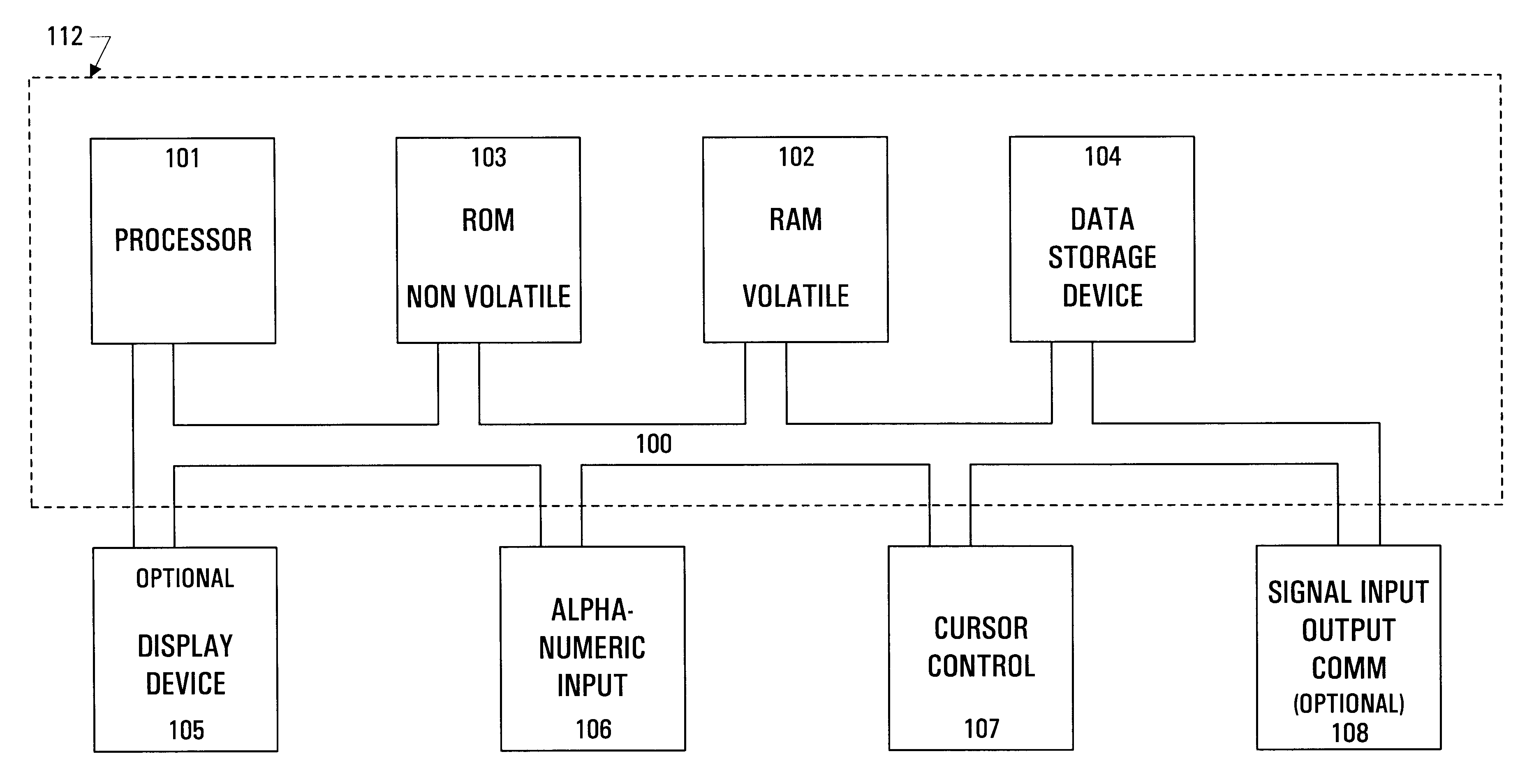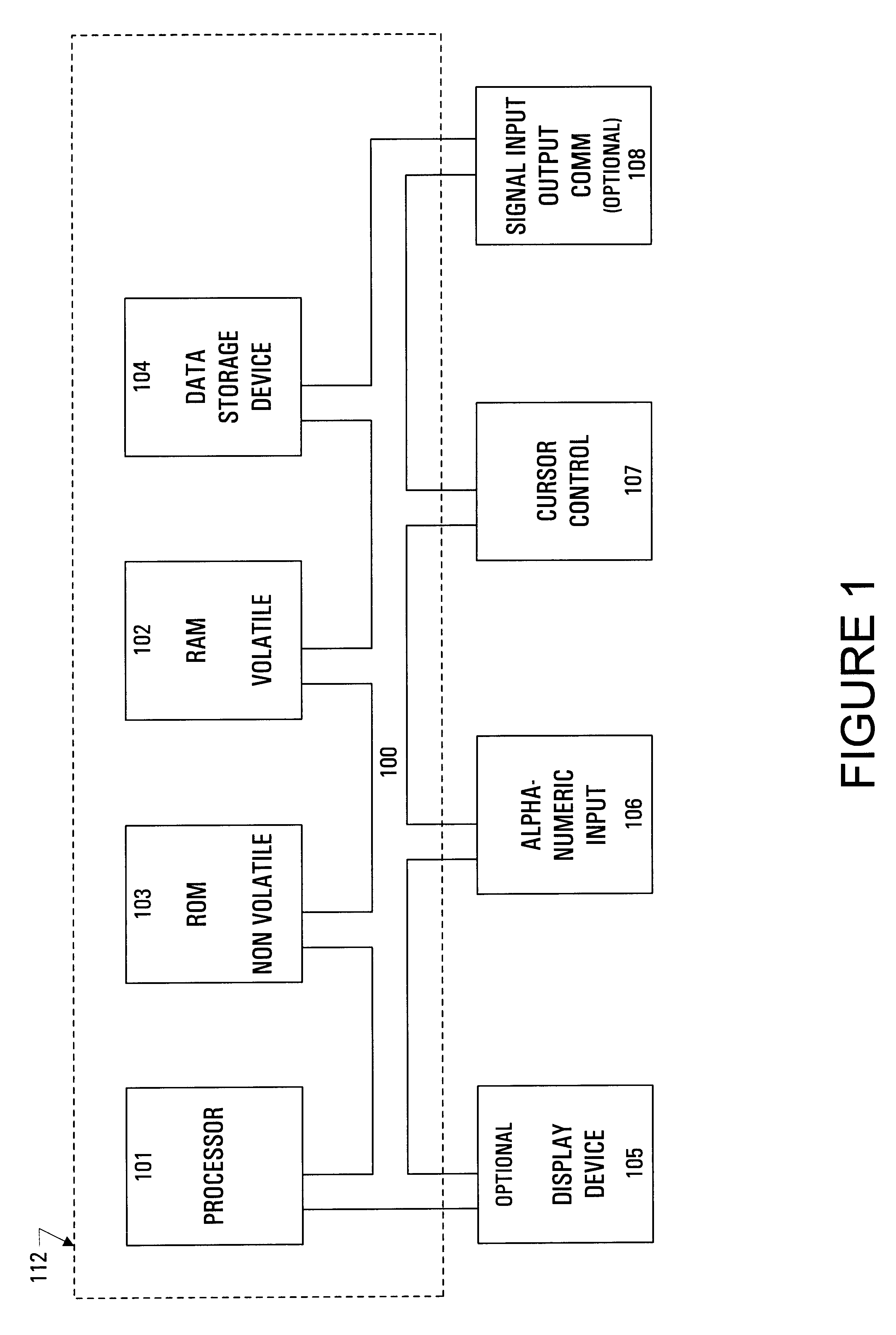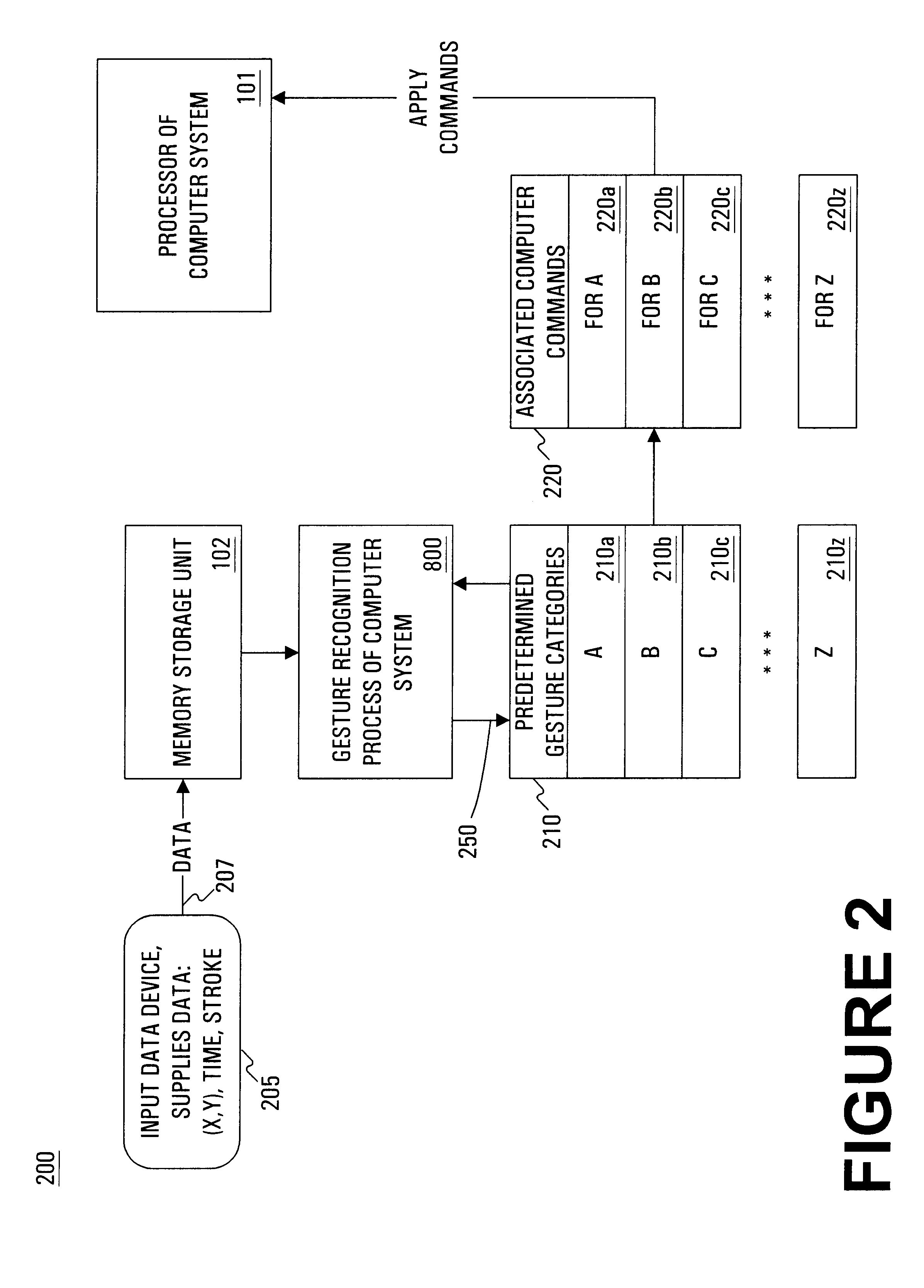Method and system for gesture category recognition and training using a feature vector
a feature vector and gesture recognition technology, applied in the field of computer implemented user interfaces, can solve problems such as not caring about speed
- Summary
- Abstract
- Description
- Claims
- Application Information
AI Technical Summary
Benefits of technology
Problems solved by technology
Method used
Image
Examples
Embodiment Construction
FIGS. 4A, 4B, 4C and 4D illustrate some exemplary "single stroke" geometric gestures that can be used in accordance with the present invention. It is appreciated that almost any geometric pattern can be used as a gesture within the present invention and that the following gestures are exemplary only. These gestures are "single stroke" because they can be made while holding down the mouse button and using a single continuous mouse movement. Exemplary gesture 405 of FIG. 4A is generally a square shape and made by starting at position 405a and tracing the cursor directing device 107 clock-wise through the square shape to the end (the arrow). It is appreciated that in one embodiment of the present invention, a particular key on the keyboard 106 is depressed while the gesture is being traced out on the cursor directing device 107.
Exemplary gesture 410 of FIG. 4B is generally a diamond shape and made with the cursor directing device 107 starting at position 410a on the mouse pad and traci...
PUM
 Login to View More
Login to View More Abstract
Description
Claims
Application Information
 Login to View More
Login to View More - R&D
- Intellectual Property
- Life Sciences
- Materials
- Tech Scout
- Unparalleled Data Quality
- Higher Quality Content
- 60% Fewer Hallucinations
Browse by: Latest US Patents, China's latest patents, Technical Efficacy Thesaurus, Application Domain, Technology Topic, Popular Technical Reports.
© 2025 PatSnap. All rights reserved.Legal|Privacy policy|Modern Slavery Act Transparency Statement|Sitemap|About US| Contact US: help@patsnap.com



